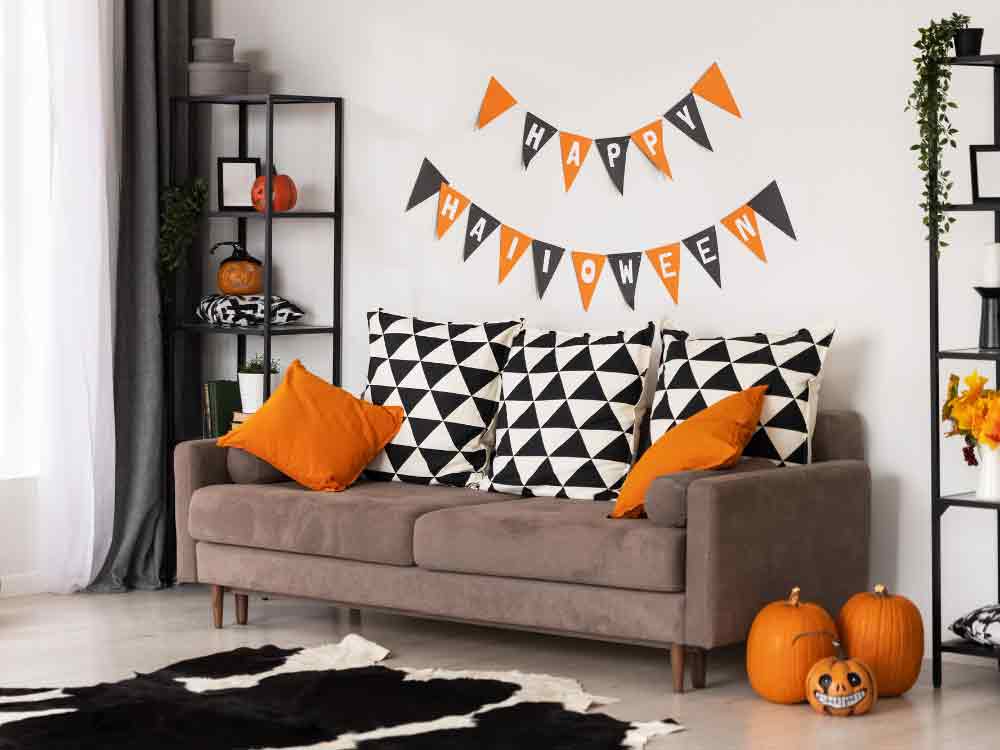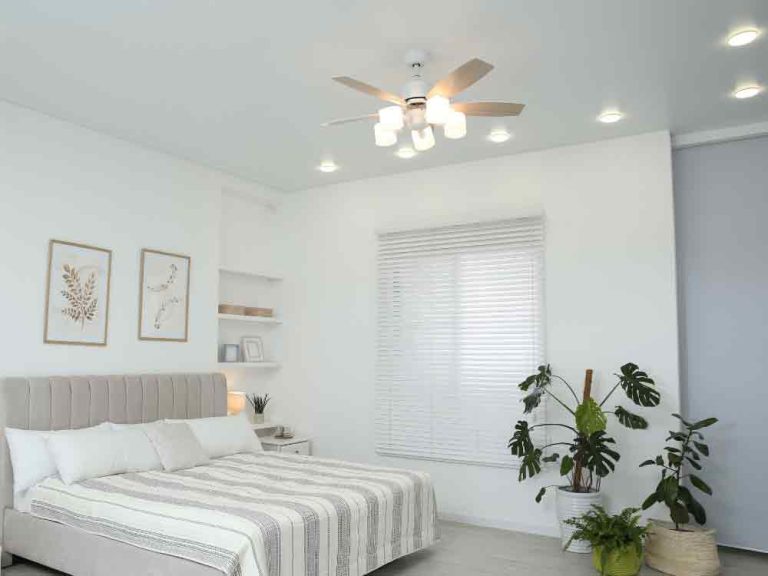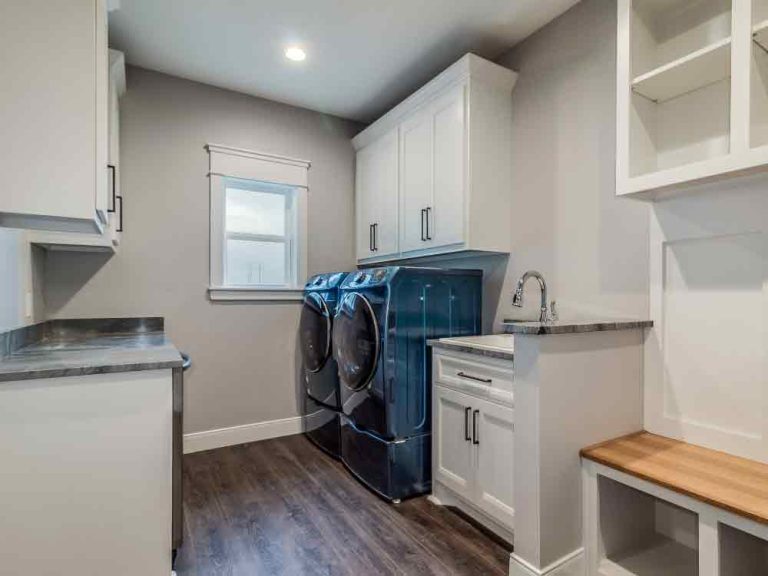How to Decorate Your House: Tips for Every Room and Style

Decorating your house is an exciting journey that transforms empty spaces into warm, welcoming environments that reflect your personality and lifestyle. Whether you’re moving into a new home or refreshing your current space, thoughtful decoration creates comfort, functionality, and beauty in every corner.
This comprehensive guide explores room-by-room decorating strategies, offering practical tips and inspiring ideas for various styles and preferences. From cozy bedrooms to functional kitchens, each space in your home deserves attention and care to reach its full potential.
Understanding the fundamentals of interior decoration empowers you to make confident choices that enhance your daily life. The right colors, furniture placement, and decorative accents work together to create harmonious spaces that serve your needs while expressing your unique taste.
Join us as we explore 30 practical decorating concepts for every room in your house, each providing actionable tips and detailed insights to help you create the home of your dreams.
1. Bright and Airy Living Room with Natural Light
Imagine walking into a living room filled with sunshine streaming through large windows, illuminating a comfortable cream sofa adorned with colorful cushions. A wooden coffee table sits on a soft area rug, while green plants in ceramic pots bring life to the corners.
The walls are painted in soft white, creating a clean backdrop that makes the room feel spacious and fresh. A modern floor lamp stands near the sofa, providing warm lighting for evening relaxation.
This design creates a peaceful atmosphere perfect for family gatherings or quiet reading time. The abundance of natural light reduces the need for artificial lighting during the day, creating an energy-efficient and healthy living environment.
The combination of neutral colors with natural elements promotes relaxation and mental clarity, making this living room an ideal retreat from busy daily life.
Decorating Tips:
- Paint walls in light colors like white, cream, or pale grey to maximize brightness.
- Position your sofa near windows to take advantage of natural light.
- Add colorful throw pillows to introduce personality without overwhelming the space.
- Include at least three plants to improve air quality and add natural beauty.
2. Cozy Bedroom with Warm Earth Tones
A cozy bedroom designed for restful sleep features a large bed with a wooden headboard and soft beige bedding. Warm brown and terracotta accents appear in the throw pillows and wall art, creating a comforting atmosphere.
Two matching nightstands with simple table lamps flank the bed, providing convenient lighting for reading. A plush area rug covers the floor beside the bed, offering a soft landing for your feet each morning.
The curtains are made from thick, natural fabric that blocks light for better sleep while adding texture to the room. A small reading chair sits in the corner with a cozy blanket draped over it.
This bedroom design prioritizes comfort and tranquility, essential elements for quality rest. The warm color palette creates a cocoon-like feeling that helps you unwind after long days.
Decorating Tips:
- Choose bedding in neutral tones for a calming effect.
- Install dimmable lights or use lamps with warm bulbs for evening relaxation.
- Keep the space clutter-free to promote peaceful sleep.
- Add personal touches like family photos or favorite artwork at eye level.
3. Functional Kitchen with Open Shelving
This modern kitchen embraces functionality with open wooden shelves displaying white dishes, glass jars, and cookbooks. The white cabinets and marble countertops create a clean, professional appearance that makes cooking enjoyable.
A kitchen island with bar stools provides extra workspace and casual dining space. Pendant lights hang above the island, offering focused lighting for food preparation and creating a stylish focal point.
Fresh herbs grow in small pots on the windowsill, adding greenery and providing fresh ingredients for cooking. The stainless steel appliances blend seamlessly with the overall design.
This kitchen layout maximizes storage while keeping frequently used items within easy reach. The combination of closed cabinets and open shelving balances practical storage with decorative display opportunities.
Decorating Tips:
- Use open shelves to display attractive dishes and reduce visual weight.
- Install good task lighting above work areas for safety and convenience.
- Keep countertops mostly clear to maintain a clean, organized appearance.
- Add a small herb garden for both decoration and practical use.
4. Elegant Dining Room with Statement Chandelier
An elegant dining room centers around a solid wood dining table surrounded by upholstered chairs in soft grey fabric. A stunning chandelier hangs above the table, casting warm light and serving as the room’s centerpiece.
The walls are painted in a sophisticated navy blue, creating dramatic contrast with the white ceiling and trim. A large mirror on one wall reflects light and makes the room feel more spacious.
A wooden sideboard against the wall provides storage for dishes and linens while offering surface space for serving during meals. Fresh flowers in a glass vase add color and life to the table setting.
This dining room balances formality with comfort, creating an inviting space for family dinners and special occasions. The thoughtful lighting and color choices establish an atmosphere that encourages lingering conversations.
Decorating Tips:
- Invest in a quality dining table that fits your space comfortably.
- Choose a chandelier that hangs 30-36 inches above the table surface.
- Use a large mirror to reflect light and create the illusion of more space.
- Add a centerpiece that can be easily removed when serving meals.
5. Peaceful Bathroom with Spa-Like Features
This peaceful bathroom transforms daily routines into relaxing rituals with its spa-inspired design. White subway tiles cover the walls, while grey floor tiles provide subtle contrast and practical durability.
A floating wooden vanity with a white vessel sink creates a modern look while providing storage underneath. A large mirror with integrated lighting offers perfect illumination for grooming tasks.
Rolled white towels sit in a woven basket, while small potted plants on the windowsill add natural touches. A glass shower enclosure keeps the space feeling open and airy.
The bathroom design emphasizes cleanliness and tranquility, creating a personal sanctuary for morning and evening routines. The neutral color scheme promotes relaxation and pairs well with any accent colors you might add.
Decorating Tips:
- Use water-resistant materials like ceramic tiles in wet areas.
- Install adequate ventilation to prevent moisture problems.
- Keep surfaces clear except for essential daily items.
- Add soft textiles like bath mats and towels for comfort and color.
6. Home Office with Productivity in Mind
A well-designed home office features a large wooden desk positioned near a window for natural light and pleasant views. A comfortable ergonomic chair in grey fabric supports long working hours.
Open shelving above the desk holds books and office supplies, keeping everything organized and accessible. A task lamp provides additional lighting for focused work during evening hours.
The walls are painted in a soft sage green, a color that promotes concentration and reduces eye strain. A small area rug defines the workspace and adds warmth to the room.
This office design balances professionalism with personal comfort, creating an environment that supports productivity without feeling sterile. The thoughtful layout minimizes distractions while keeping necessary tools within reach.
Decorating Tips:
- Position your desk to face the room rather than a wall when possible.
- Invest in proper lighting to reduce eye strain and fatigue.
- Use vertical storage solutions to maximize floor space.
- Add personal items like photos or plants to make the space inviting.
7. Child-Friendly Playroom with Storage Solutions
This colorful playroom balances fun and functionality with bright primary colors and smart storage solutions. Cube shelving units line one wall, providing designated spaces for toys, books, and art supplies.
A soft play mat covers the center of the floor, creating a safe area for active play. A small table with chairs offers space for crafts, snacks, and homework.
The walls feature removable wall decals of animals and stars, adding visual interest without permanent commitment. Colorful storage bins in the cube shelves make cleanup easy and teach organizational skills.
This playroom design prioritizes safety and easy maintenance while creating an environment that stimulates creativity and imagination. The abundance of storage keeps the space tidy and teaches children responsibility.
Decorating Tips:
- Choose washable surfaces and durable materials for easy cleaning.
- Provide low storage that children can access independently.
- Use bright colors to stimulate creativity and energy.
- Create different zones for various activities like reading, building, and art.
8. Minimalist Entryway with Maximum Impact
This minimalist entryway makes a strong first impression with clean lines and carefully chosen elements. A narrow console table holds a decorative bowl for keys and a modern table lamp.
A large round mirror hangs above the console, reflecting light and making the space feel larger. Hooks mounted on the wall provide convenient storage for coats and bags.
A simple bench with a cushion offers a place to sit while putting on shoes, with a basket underneath for shoe storage. A single piece of artwork adds personality without cluttering the visual space.
This entryway design proves that less can be more, creating a welcoming entrance that stays organized and clutter-free. The functional elements serve daily needs while maintaining aesthetic appeal.
Decorating Tips:
- Keep surfaces mostly clear to maintain a welcoming appearance.
- Install adequate lighting to create a bright, safe entrance.
- Provide storage solutions for everyday items like keys and mail.
- Add one statement piece like a mirror or artwork as a focal point.
9. Comfortable Guest Bedroom with Hotel Vibes
A comfortable guest bedroom offers hotel-quality comfort with a plush queen bed dressed in crisp white linens and layered with a soft duvet and decorative pillows.
Two matching nightstands with reading lamps provide convenience for guests. A luggage rack sits at the foot of the bed, offering a place for suitcases without cluttering the floor.
The walls are painted in a soothing light blue, creating a restful atmosphere. Empty closet space and cleared drawer space make guests feel welcome and at home.
Fresh flowers in a vase on the dresser and fresh towels folded on the bed demonstrate thoughtfulness and care. A small water carafe with glasses sits on one nightstand.
This guest room design anticipates visitors’ needs, creating a comfortable retreat that makes guests feel valued and cared for. The neutral palette allows the space to accommodate different preferences.
Decorating Tips:
- Provide multiple pillow options for different sleeping preferences.
- Clear storage space before guests arrive.
- Include a full-length mirror for convenience.
- Add thoughtful touches like spare phone chargers or a reading selection.
10. Multi-Purpose Laundry Room with Organization
This efficient laundry room maximizes functionality with wall-mounted cabinets providing ample storage for detergents and cleaning supplies. A folding counter above the washer and dryer creates workspace for sorting and folding clothes.
A hanging rod mounted below the cabinets offers space for air-drying delicate items. Labeled storage baskets keep different items organized and easy to find.
The walls are painted in a cheerful yellow, making household chores feel less tedious. A small plant on the counter adds life to the practical space.
This laundry room proves that utilitarian spaces can be both functional and attractive. The organized layout streamlines laundry tasks and makes the room pleasant to work in.
Decorating Tips:
- Install cabinets above appliances to maximize vertical space.
- Use cheerful colors to make the space more inviting.
- Label storage containers for easy identification.
- Add a small rug for comfort while standing during tasks.
11. Cozy Reading Nook by the Window
A cozy reading nook transforms an unused corner into a personal retreat with a comfortable armchair positioned near a large window. A small side table holds a reading lamp and a cup of tea.
A plush throw blanket drapes over the chair arm, ready for cool evenings. A small bookshelf within arm’s reach keeps favorite books close at hand.
The window treatment uses sheer curtains that filter natural light while maintaining privacy. A soft area rug defines the space and adds warmth underfoot.
This reading nook creates a dedicated space for quiet activities, encouraging relaxation and personal time. The natural light and comfortable seating make it perfect for reading, thinking, or simply enjoying peaceful moments.
Decorating Tips:
- Choose a chair with good back support for extended sitting.
- Position seating to take advantage of natural light.
- Keep books and reading materials within easy reach.
- Add personal touches like favorite photos or small treasures.
12. Open-Concept Living and Dining Area
This open-concept space combines living and dining areas with careful furniture placement and cohesive color schemes. A large sectional sofa defines the living area, facing away from the dining space.
An area rug under the coffee table visually separates the living zone from the dining zone. The dining table and chairs share the same wood finish as the coffee table, creating visual continuity.
Pendant lights above the dining table and floor lamps near the sofa provide layered lighting for different activities. The walls are painted in a consistent neutral color throughout, maintaining visual flow.
This open layout creates a spacious feeling while maintaining distinct functional areas. The design encourages social interaction while allowing for different activities to happen simultaneously.
Decorating Tips:
- Use area rugs to define different functional zones.
- Maintain consistent color palettes throughout the open space.
- Arrange furniture to create natural pathways between areas.
- Use lighting to distinguish different zones without walls.
13. Rustic Bedroom with Natural Wood Elements
This rustic bedroom embraces natural materials with a reclaimed wood headboard and matching wooden bedside tables. The bedding features earth-tone colors in brown, beige, and cream.
Wrought iron light fixtures add industrial touches that complement the rustic aesthetic. A cozy knit throw blanket at the foot of the bed provides texture and warmth.
The walls are painted in a warm taupe color that harmonizes with the wood tones. A vintage-style area rug covers the floor, adding pattern and softness.
This bedroom design creates a connection to nature while maintaining comfort and style. The warm materials and colors promote relaxation and restful sleep.
Decorating Tips:
- Choose furniture with visible wood grain for authentic rustic appeal.
- Layer different textures like knit, linen, and leather.
- Keep the color palette warm and earthy.
- Add vintage or antique pieces for character and history.
14. Modern Kitchen with Sleek Design
This modern kitchen features flat-panel cabinets in a glossy white finish with minimal hardware. Quartz countertops in grey provide a durable and stylish work surface.
Stainless steel appliances create a cohesive, professional appearance. Under-cabinet LED lighting illuminates work surfaces for better visibility and adds a sophisticated glow.
A breakfast bar extends from the kitchen island, providing casual dining space with modern bar stools. The backsplash uses large-format tiles for a clean, contemporary look.
This kitchen design emphasizes clean lines and efficient functionality, creating a space where cooking becomes a pleasure. The neutral palette allows for easy updates through accessories and small appliances.
Decorating Tips:
- Choose handleless cabinets or minimal hardware for a streamlined look.
- Install LED lighting for energy efficiency and modern appeal.
- Keep countertops clear to maintain the minimalist aesthetic.
- Add pops of color through small appliances or accessories.
15. Traditional Dining Room with Classic Elegance
A traditional dining room features a dark wood dining table with carved details and matching upholstered chairs with nailhead trim. A classic crystal chandelier provides elegant overhead lighting.
The walls are covered in subtle damask wallpaper in cream and gold tones. Heavy curtains in burgundy velvet frame the windows, adding drama and controlling light.
A formal china cabinet displays fine dishes and serving pieces, while a classic area rug with traditional patterns anchors the dining set. Fresh flowers in a silver vase complete the refined look.
This dining room design celebrates timeless elegance and formal entertaining, creating a space where special occasions feel even more memorable. The classic elements create a sense of permanence and quality.
Decorating Tips:
- Invest in quality wood furniture that will last generations.
- Layer textures through upholstery, curtains, and rugs.
- Display cherished items in glass-front cabinets.
- Choose classic lighting fixtures that won’t go out of style.
16. Contemporary Bathroom with Bold Tile Choices
This contemporary bathroom makes a statement with geometric black and white floor tiles creating visual interest. The walls feature large-format white tiles for a clean backdrop.
A wall-mounted vanity in dark wood provides storage while maintaining an open feel. A frameless glass shower enclosure keeps the space feeling spacious.
Brushed gold fixtures add warmth and luxury to the monochromatic palette. A large rectangular mirror with integrated lighting provides perfect illumination for grooming.
This bathroom design demonstrates how bold choices can create a sophisticated space. The high-contrast colors and quality materials elevate daily routines into enjoyable experiences.
Decorating Tips:
- Choose one bold element and keep other features neutral.
- Install quality fixtures that complement your chosen style.
- Use large tiles to minimize grout lines and create a cleaner look.
- Add warmth through metallic finishes and natural materials.
17. Creative Home Office with Inspiration Wall
A creative home office stimulates productivity with a large corkboard covering one wall, displaying inspiring images, project plans, and favorite quotes.
A spacious L-shaped desk provides ample workspace for computer equipment and creative projects. Open shelving displays books, reference materials, and decorative objects.
The chair is both comfortable and stylish in a bright turquoise fabric that adds personality to the neutral room. Good task lighting and natural window light combine for optimal working conditions.
This office design encourages creativity while maintaining organization, perfect for artists, writers, or anyone who works with ideas. The inspiration wall serves as a dynamic element that evolves with projects.
Decorating Tips:
- Create an inspiration wall to keep motivation visible.
- Choose a chair in a bold color to energize the space.
- Use a mix of open and closed storage for flexibility.
- Position your workspace to balance natural and artificial light.
18. Organized Mudroom with Family Storage
This practical mudroom keeps family life organized with individual cubbies for each family member, featuring hooks for coats and compartments for shoes and bags.
A bench with cushioned seating provides a comfortable place to put on and remove shoes. Storage baskets on upper shelves hold seasonal items and accessories.
The walls are painted in a durable, easy-to-clean finish in a medium grey tone. A large calendar and message board keep everyone informed of schedules and activities.
This mudroom design prevents clutter from spreading throughout the house by providing designated storage for everyone’s belongings. The functional layout supports busy family routines.
Decorating Tips:
- Provide individual storage for each family member.
- Choose durable, washable materials for high-traffic areas.
- Include seating for putting on shoes comfortably.
- Add organizational tools like calendars and key hooks.
19. Relaxing Master Bedroom Suite
A relaxing master bedroom creates a private retreat with a king-size bed dressed in luxurious linens in soft grey and white tones. A tufted upholstered headboard adds elegance and comfort.
Matching nightstands with three-way lamps provide flexible lighting options. A small seating area near the window includes two chairs and a small table for morning coffee.
The room features a ceiling fan for comfort and energy efficiency. Blackout curtains behind sheer panels allow control over light and privacy.
This master bedroom design prioritizes rest and relaxation, creating a personal sanctuary away from daily stresses. The layered lighting and comfortable furnishings support various activities from reading to relaxation.
Decorating Tips:
- Invest in quality mattress and bedding for better sleep.
- Create a small seating area if space allows.
- Install layered window treatments for light control.
- Keep electronics minimal or concealed for better rest.
20. Efficient Galley Kitchen Layout
This efficient galley kitchen maximizes limited space with cabinets on both walls and a narrow pathway between them. Light colors throughout make the space feel larger than it is.
Pull-out drawers and organizers inside cabinets maximize storage capacity. A narrow rolling cart provides additional prep space that can be moved when not needed.
Under-cabinet lighting brightens work surfaces, while pendant lights add style without taking up space. A small window above the sink provides natural light and ventilation.
This kitchen design proves that small spaces can be highly functional with smart planning. The efficient layout minimizes steps while cooking and keeps everything within easy reach.
Decorating Tips:
- Use light colors to make small kitchens feel more spacious.
- Install organizers inside cabinets to maximize every inch.
- Choose slim appliances designed for compact spaces.
- Keep countertops clear to maintain a sense of openness.
21. Formal Living Room for Entertaining
A formal living room arranged for entertaining features a symmetrical furniture layout with a sofa facing two matching armchairs across a substantial coffee table.
The walls are painted in a sophisticated deep grey, while crown molding and baseboards in crisp white add architectural interest. Table lamps on side tables provide ambient lighting.
A decorative fireplace serves as the focal point, with a large mirror above reflecting light and adding depth. The furniture upholstery features quality fabrics in coordinating colors.
This living room design creates an atmosphere suitable for entertaining guests or enjoying formal family time. The balanced arrangement and quality furnishings convey a sense of permanence and style.
Decorating Tips:
- Arrange furniture to encourage conversation.
- Choose quality pieces that will last many years.
- Add architectural details through molding and trim.
- Create a clear focal point like a fireplace or artwork.
22. Bright and Cheerful Children’s Bedroom
A cheerful children’s bedroom uses primary colors sparingly against a white background to create an energetic but not overwhelming space. A twin bed with colorful bedding provides a cozy sleeping area.
A desk with a comfortable chair creates a homework station. Open cube storage keeps toys organized while making cleanup easy for children.
The walls feature removable decals of favorite characters or themes that can be changed as interests evolve. A soft area rug provides a comfortable play surface.
This bedroom design grows with the child through flexible furniture and changeable decorative elements. The organized storage teaches responsibility while keeping the room tidy.
Decorating Tips:
- Use removable decorations that can change with interests.
- Provide adequate storage at child-accessible heights.
- Include a dedicated homework or creative space.
- Choose durable, washable fabrics and surfaces.
23. Spa-Inspired Master Bathroom
This spa-inspired master bathroom creates a luxurious retreat with a freestanding soaking tub positioned near a window. Natural stone tiles in soft grey cover the floors and walls.
A large walk-in shower features a rainfall showerhead and built-in bench. Double vanities with vessel sinks provide ample space for two people.
Heated towel racks hold fluffy white towels, while recessed lighting creates a soft, flattering glow. Small potted orchids add natural beauty without requiring much maintenance.
This bathroom design transforms daily routines into indulgent experiences. The spa-like features and calming colors promote relaxation and self-care.
Decorating Tips:
- Choose natural materials like stone and wood for authentic appeal.
- Install quality fixtures that enhance the luxury feel.
- Provide adequate storage to keep surfaces clear.
- Add plants that thrive in humid bathroom conditions.
24. Multi-Functional Bonus Room
A flexible bonus room serves multiple purposes with distinct zones for different activities. One area features a comfortable sectional and television for entertainment.
Another corner includes a desk and bookshelves for working or studying. Exercise equipment occupies a third zone near windows for natural light during workouts.
The neutral color scheme and cohesive flooring unite the different areas. Storage solutions keep each zone organized and prevent clutter from spreading.
This bonus room design maximizes the utility of extra space, accommodating various family needs within one room. The flexible layout can adapt as needs change over time.
Decorating Tips:
- Define different zones with area rugs or furniture placement.
- Use multifunctional furniture when possible.
- Maintain visual cohesion through consistent colors.
- Provide adequate storage for each activity area.
25. Cottage-Style Kitchen with Character
This cottage-style kitchen charms with painted cabinets in soft blue-green tones and open shelving displaying colorful dishes. Butcher block countertops add warmth and practical work surfaces.
A farmhouse sink under a window provides pleasant views while washing dishes. Vintage-inspired hardware and light fixtures add character and personality.
Glass-front upper cabinets display favorite dishes while protecting them from dust. A small kitchen table in one corner provides casual dining space.
This kitchen design creates a warm, welcoming atmosphere that invites lingering and conversation. The cottage style balances practical function with charming aesthetics.
Decorating Tips:
- Paint cabinets in soft, muted colors for cottage appeal.
- Display favorite dishes and serving pieces on open shelves.
- Choose butcher block or wood countertops for warmth.
- Add vintage or vintage-inspired accessories for character.
26. Cozy Den with Fireplace Focus
A cozy den centers around a fireplace with comfortable seating arranged to take advantage of the warmth. Built-in bookshelves flanking the fireplace provide storage and display space.
A plush area rug defines the seating area, while soft throw blankets drape over chair arms. The walls are painted in a warm taupe that complements the wood tones.
Table lamps and sconces provide layered lighting for reading and relaxation. Family photos and personal treasures on the shelves make the space feel intimate and personal.
This den design creates a room perfect for relaxing, reading, or intimate family time. The fireplace and comfortable furnishings encourage people to gather and stay awhile.
Decorating Tips:
- Arrange seating to take advantage of the fireplace.
- Use built-in shelving for efficient storage and display.
- Layer lighting for flexibility and ambiance.
- Add personal items to make the space feel uniquely yours.
27. Teen Bedroom with Study Space
A teen bedroom balances style with functionality, featuring a full-size bed with trendy bedding in favorite colors. A large desk with good lighting creates a serious study area.
A bulletin board above the desk displays schedules, photos, and inspiration. Storage ottomans provide extra seating for friends while hiding clutter inside.
The walls feature one accent wall in a bold color chosen by the teen, while other walls remain neutral. Personal style shines through in accessories and decorations.
This bedroom design respects the teen’s growing independence while providing the functionality needed for school and personal activities. The flexible elements allow for easy updates as tastes evolve.
Decorating Tips:
- Involve teens in decorating decisions to ensure they love their space.
- Provide a serious study area with good lighting and organization.
- Allow bold choices in easily changeable elements.
- Include adequate storage for clothes, shoes, and personal items.
28. Sunroom with Indoor-Outdoor Connection
This bright sunroom blurs the line between indoors and outdoors with walls of windows providing panoramic views. Wicker furniture with comfortable cushions creates casual seating areas.
Many plants of various sizes bring nature indoors and thrive in the abundant light. Ceiling fans keep air circulating during warm months.
Tile flooring provides durability and easy maintenance. Sheer curtains can be drawn for privacy or sun control without blocking the views.
This sunroom design creates a perfect transition space between house and garden. The bright, airy atmosphere makes it ideal for morning coffee, reading, or entertaining.
Decorating Tips:
- Choose weather-resistant furniture that can handle temperature changes.
- Include many plants to enhance the indoor-outdoor feeling.
- Use durable, easy-to-clean flooring.
- Install window treatments that control sun without blocking views.
29. Functional Laundry and Craft Room Combo
This dual-purpose room combines laundry facilities with craft storage and workspace. One wall holds the washer and dryer with cabinets above for supplies.
A large work table in the center provides space for folding laundry or spreading out craft projects. Shelving units store craft supplies in labeled containers.
Good lighting throughout ensures visibility for detailed work. A rolling cart holds frequently used items and can be moved as needed.
This combination room design maximizes limited space by serving two functions efficiently. The organized layout keeps supplies accessible while preventing clutter.
Decorating Tips:
- Combine compatible functions to maximize space utility.
- Use vertical storage to keep floors clear.
- Label containers clearly for easy finding.
- Provide adequate lighting for detailed tasks.
30. Elegant Powder Room for Guests
An elegant powder room makes a strong impression with a beautiful pedestal sink and decorative mirror with an ornate frame. The walls feature wallpaper with a subtle pattern.
A small console table holds guest towels and a pretty soap dispenser. A piece of artwork adds personality to the compact space.
Good lighting flatters guests and provides adequate illumination. The floor uses durable tile in an attractive pattern.
This powder room design proves that small spaces can make big impressions. The elegant touches show attention to detail and hospitality.
Decorating Tips:
- Choose one statement piece like a mirror or wallpaper.
- Provide fresh guest towels and quality soap.
- Install flattering lighting at face level.
- Keep the space clean and well-stocked with necessities.
Conclusion
Decorating your house is a rewarding process that transforms spaces into personal sanctuaries. Each room offers unique opportunities to express your style while meeting functional needs.
Whether you prefer modern minimalism, rustic charm, or traditional elegance, these thirty concepts provide inspiration for every room and style. The key is choosing elements that resonate with your personality while serving your lifestyle.
Remember that good decoration balances beauty with function, creating spaces that look attractive while supporting daily activities. Don’t hesitate to experiment with these ideas, adapting them to your specific needs and preferences.
Start with one room, take your time selecting pieces you truly love, and enjoy the process of creating a home that reflects who you are and supports how you live. Your perfect home awaits your personal touch.






